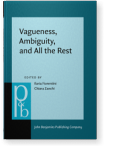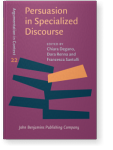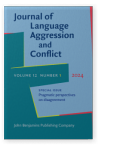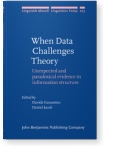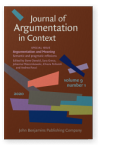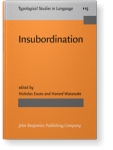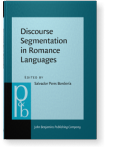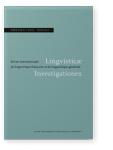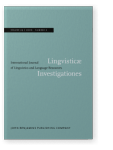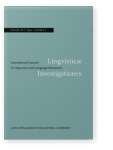Edoardo Lombardi Vallauri
List of John Benjamins publications for which Edoardo Lombardi Vallauri plays a role.
2024 Chapter 4. Vagueness and ambiguity are very different (persuasion devices) Vagueness, Ambiguity, and All the Rest: Linguistic and pragmatic approaches, Fiorentini, Ilaria and Chiara Zanchi (eds.), pp. 51–83 | Chapter
Without taking a strong theoretical stance on the terminological boundary between ambiguity and vagueness, we suggest that, at least when considered as persuasion devices, they are quite different and almost opposite phenomena. We suggest that vagueness is effectively persuasive in that it can… read more
2024 Chapter 10. Teaching to manage implicit linguistic meanings: The state of the art and future perspectives Persuasion in Specialized Discourse: A multidisciplinary perspective, Degano, Chiara, Dora Renna and Francesca Santulli (eds.), pp. 211–231 | Chapter
Conveying information implicitly can reduce epistemic vigilance and critical attention. Commercial advertising and political propaganda often exploit this property of linguistic implicitness to covertly convey questionable content, leading to the manipulation of their audience. This highlights… read more
2024 Aggression and disagreement in public communication: Convincing third parties through implicit strategies Pragmatic perspectives on disagreement, Schumann, Jennifer and Steve Oswald (eds.), pp. 41–65 | Article
The persuasive effectiveness of implicit strategies, associated with reduced epistemic vigilance, may lead to their exploitation in conveying doubtful information in advertisement and propaganda. In political communication, presuppositions tend to specialize for the conveyance of questionable… read more
2022 Distinguishing psychological Given/New from linguistic Topic/Focus makes things clearer When Data Challenges Theory: Unexpected and paradoxical evidence in information structure, Garassino, Davide and Daniel Jacob (eds.), pp. 39–56 | Chapter
The paper suggests that there is no contradiction in cleft sentences focalizing information which was already introduced by the preceding context, because being already active in discourse (i.e., Given) is not the same as being linguistically encoded as a Topic, and Given information can be… read more
2020 Implicit argumentation and persuasion: A measuring model Argumentation and Meaning: Semantic and pragmatic reflexions, Oswald, Steve, Sara Greco, Johanna Miecznikowski, Chiara Pollaroli and Andrea Rocci (eds.), pp. 95–123 | Article
The paper provides evidence that linguistic strategies based on the implicit encoding of information are effective means of deceptive argumentation and manipulation, as they can ease the acceptance of doubtful arguments by distracting addressees’ attention and by encouraging shallow processing of… read more
2016 Chapter 6. Insubordinated conditionals in spoken and non-spoken Italian Insubordination, Evans, Nicholas and Honoré Watanabe (eds.), pp. 145–170 | Article
In this chapter, Italian free conditionals are located within the general framework of Insubordination (Evans 2007). By means of the data contained in spoken and non-spoken Italian corpora, a series of questions related to the issue are addressed. The question regarding the extent to which the use… read more
2014 The topologic hypothesis of prominence as a cue to information structure in Italian Discourse Segmentation in Romance Languages, Pons Bordería, Salvador (ed.), pp. 219–241 | Article
The article proposes a strictly structural hypothesis on the marking of information structure (IS) by means of prosodic prominence, based on experimental data from spoken Italian. Main prominence can be conceived of in a “topological” way, where its location effects demarcation between different… read more
2010 Free conditionals in discourse: The forming of a construction Lingvisticæ Investigationes 33:1, pp. 50–85 | Article
Conditional clauses in spoken Italian and other languages are often uttered with no main clause. It will be argued that in this case they constitute a construction in a technical sense, namely in the sense proposed by Simone (2006a), which is mainly reliant on the presence of specific pragmatic… read more
2000 The role of discourse, syntax and the lexicon in determining the nature and extent of focus Lingvisticæ Investigationes 23:2, pp. 229–252 | Article
Summary The paper compares broad focus, narrow focus and contrastive focus in English and Italian. It concludes that a focus cannot have a contrastive meaning unless some precise syntactic and discourse features “preliminarly” make it a narrow focus. The comparison between broad and narrow focus… read more
1994 A Multilevel Functional Classification of Relative Clauses Lingvisticæ Investigationes 18:2, pp. 321–356 | Article
Relative Clauses (RCs) have been described and classified according to many different criteria (Sect. 1). This article deals with the distinctions that can be observed within the variety of English RCs in terms of phonological shape, syntactic structure, semantic content, presuppositions and… read more
